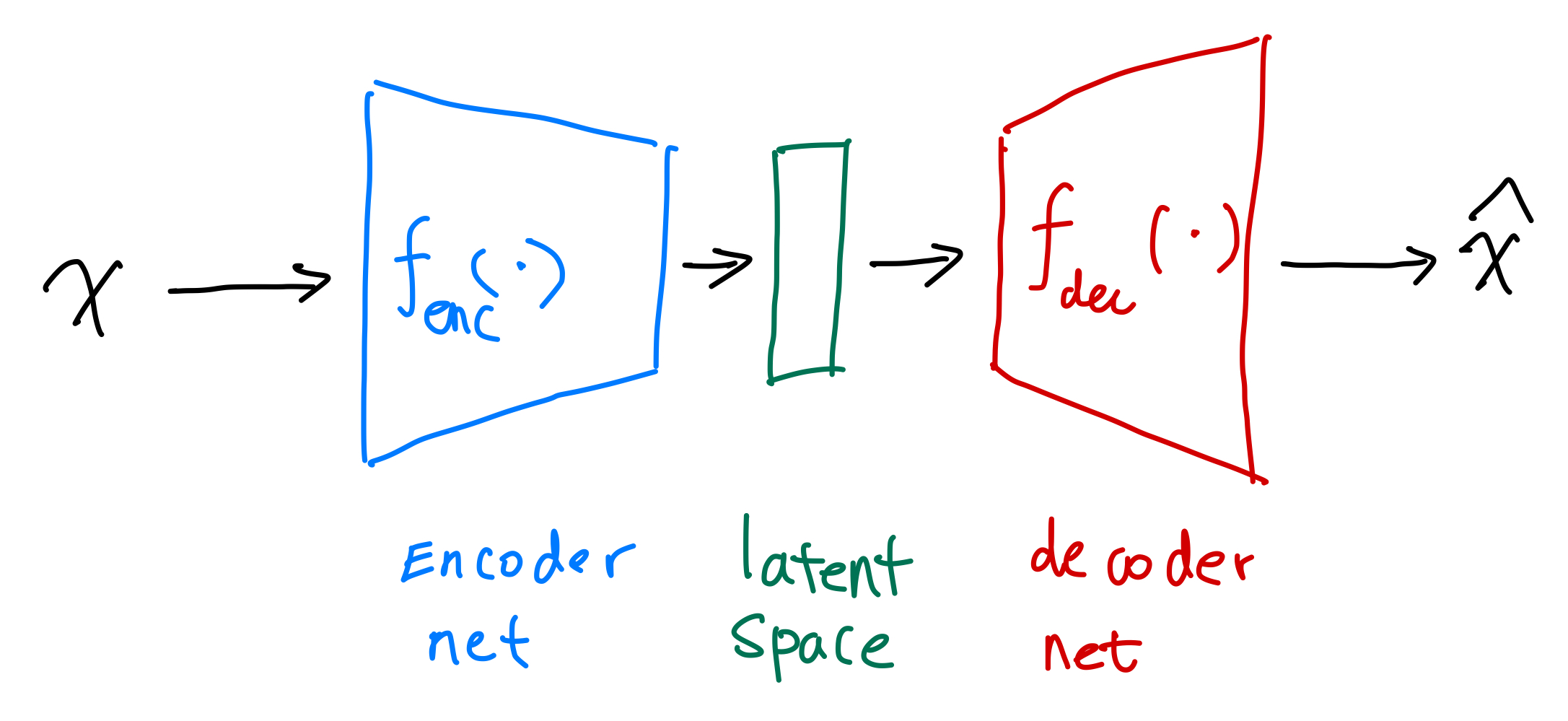Autoencoders¶
Autoencoders (AE) are machines that encode inputs into a compact latent space.

Notation: dot (\(\cdot\))
We use a single vertically centered dot, i.e., \(\cdot\), to indicate that the function or machine can take in arguments.
A simple autoencoder can be achieved using two neural nets, e.g.,
\[
\begin{align}
{\color{green}h} &= {\color{blue}g}{\color{blue}(}{\color{blue}b} + {\color{blue}w} x{\color{blue})} \\
\hat x &= {\color{red}\sigma}{\color{red}(c} + {\color{red}v} {\color{green}h}{\color{red})},
\end{align}
\]
where in this simple example,
- \({\color{blue}g(b + w \cdot )}\) is the encoder, and
- \({\color{red}\sigma(c + v \cdot )}\) is the decoder.
For binary labels, we can use a simple cross entropy as the loss.
Code¶
See Lippe1.
-
Lippe P. Tutorial 9: Deep Autoencoders — UvA DL Notebooks v1.1 documentation. In: UvA Deep Learning Tutorials [Internet]. [cited 20 Sep 2021]. Available: https://uvadlc-notebooks.readthedocs.io/en/latest/tutorial_notebooks/tutorial9/AE_CIFAR10.html ↩
Contributors: